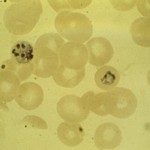Link to Pubmed [PMID] – 3789022
Am J Med Genet 1986 Dec; 25(4): 623-34
The initial formation of skeletal muscle fibers is accompanied by the expression of muscle-type actin and myosin genes. During subsequent maturation of muscle fibers in vivo, developmental changes in the fetal/adult isoforms of these proteins occur. Skeletal muscle-specific transcripts coding for different myosin heavy chains accumulate sequentially both in vivo and in vitro. A genetic analysis demonstrates that these genes are clustered, implicating cis-acting regulatory factors. In contrast, actin and myosin light chain genes are dispersed in the mouse genome. These gene families show a different developmental “strategy”: Genes expressed in adult cardiac tissue are coexpressed with the corresponding skeletal muscle sequence during fetal development. This phenomenon also occurs in adult tissue. Under conditions of cardiac overload, adult rat hearts accumulate skeletal actin mRNA and cardiac actin transcripts. In some mouse lines, a mutant cardiac actin gene locus is present. The presence of a second active upstream promoter at this locus depresses transcription of the bone fide gene, resulting in low levels of mature cardiac actin mRNA. In this situation skeletal actin gene transcripts accumulate. Genes expressed in the same fetal or adult muscle phenotype are not linked, suggesting that their coexpression is regulated by transacting factors. The promoter regions of such genes in the mouse have no common characteristics of primary structure with the exception of an E1A-type enhancer core sequence, which has a conserved 5′ flanking element, seen for actin and myosin light chain genes. Reintroduction of these promoter regions into muscle cells provides a functional test for such potential regulatory sequences.


